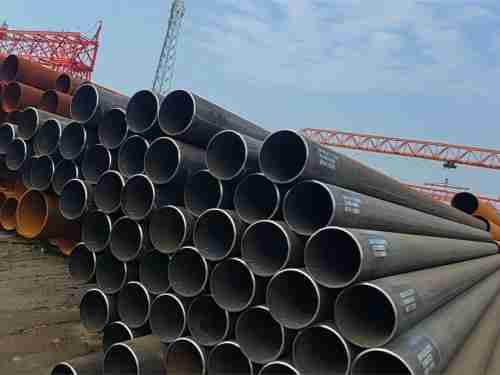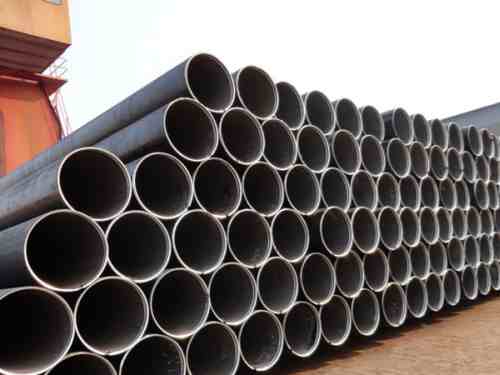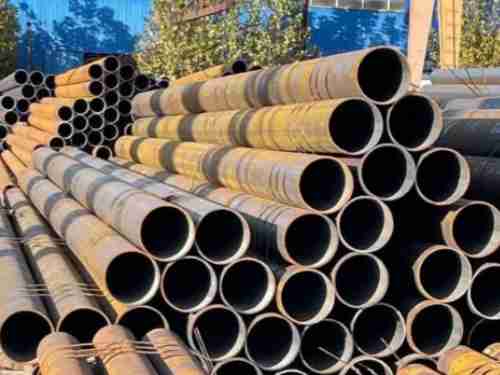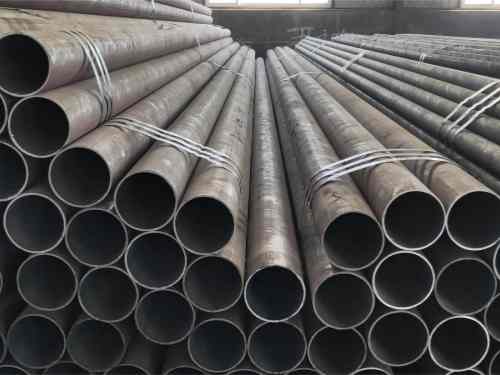In modern industry, Electric Resistance Welded (ERW) pipes are indispensable as essential components in fluid transportation systems. Produced by heating the edges of steel strips and joining them under pressure via high-frequency resistance welding, ERW pipes are valued for their efficiency, cost-effectiveness, and wide applicability.
Despite their inherent mechanical advantages, ERW pipes often face harsh service conditions. In such scenarios, uncoated pipes are prone to corrosion, abrasion, and degradation—issues that significantly reduce operational life and safety. Coating serves as a critical protective barrier, extending the pipe’s service life and enhancing its performance. This article provides an in-depth overview of ERW pipe coatings, including their necessity, benefits, types, and application considerations.
Why Do ERW Pipes Require Coating?
While ERW pipes are widely used in municipal water supply, gas distribution, and industrial fluid systems, their exposure to corrosive or abrasive environments can lead to early failure. High-performance coatings are essential to:
Prevent corrosion and chemical attack
Minimize wear from transported media
Enable use in extreme temperatures
Ensure compliance with health and environmental standards
Key Advantages of ERW Pipe Coatings
- Superior Corrosion Protection
Advanced coatings such as epoxy and polyethylene (PE) effectively shield pipes from moisture, oxygen, and aggressive chemicals. In coastal, buried, or chemically reactive environments, coated ERW pipes can last three to five times longer than uncoated ones.
- Enhanced Abrasion Resistance
For applications involving abrasive slurries or particulate-laden fluids, coatings like ceramic composites or polyurethane offer excellent wear resistance, reducing inner wall erosion and preserving pipe thickness over time.
- Stable Performance in Extreme Conditions
Specialty coatings maintain integrity under temperatures ranging from -40°C to +200°C. For instance, silicone-based coatings are ideal for high-temperature steam pipelines, while modified epoxy systems are designed for sub-zero environments.
- Environmental and Hygienic Compliance
Coatings used in drinking water and food-grade applications are non-toxic, smooth-surfaced, and compliant with hygiene regulations, reducing both contamination risks and hydraulic friction.
Common Types of ERW Pipe Coatings
- Epoxy Coating
Epoxy coatings offer strong adhesion and chemical resistance.
Liquid Epoxy: Room temperature curing; suitable for small to medium-diameter pipes.
Fusion-Bonded Epoxy (FBE): Powder-based; heat-cured for even, durable coverage on larger pipes.
Applications: Water distribution, gas pipelines, industrial effluent systems.
- Polyethylene (PE) Coating
Available as single-layer or 3-layer systems (epoxy primer + adhesive + PE topcoat), PE coatings are known for impact resistance, flexibility, and corrosion protection.
Applications: Long-distance oil and gas transmission, especially underground pipelines.
- Zinc Coating (Galvanizing)
Hot-dip or electro-galvanized coatings provide cathodic protection at low cost.
Applications: Indoor or mildly corrosive environments, building services, and low-pressure water lines.
- Specialty Coatings
Food-grade Coatings: e.g., PTFE for sanitary pipelines in food and pharmaceutical industries.
High-temperature Coatings: Ceramic or silicone-based materials for systems exposed to heat up to 200°C.
Applications: Specialized industries with strict hygienic or thermal requirements.
Coating Process Essentials
- Surface Preparation
Prior to coating, steel surfaces must be cleaned via acid pickling or sandblasting to remove scale, rust, and oils, ensuring maximum coating adhesion.
- Coating Application and Quality Control
Coating thickness typically ranges from 50–300μm depending on type. Key quality checks include:
Thickness measurement
Uniformity evaluation
Pinhole and adhesion testing
Standards such as GB/T 23257 (for PE coatings on buried pipelines) govern these processes.
Application-Specific Coating Recommendations
|
Application
|
Recommended Coating System
|
|
Municipal Water Supply
|
Food-grade epoxy (meets GB/T 17219 hygiene standards)
|
|
Natural Gas Pipelines
|
3-layer PE (epoxy primer + adhesive + PE outer layer)
|
|
Chemical Plants
|
Fluoropolymer or phenolic resin for acid/alkali resistance
|
|
Offshore Engineering
|
Zinc-aluminum base with epoxy topcoat for saltwater durability
|
Conclusion
Coating is not merely an optional enhancement for ERW pipes—it is essential to ensure long-term reliability, especially in challenging environments. By selecting appropriate coating types and maintaining strict process controls, operators can significantly reduce maintenance costs, prevent failures, and extend the functional lifespan of their piping systems.

 English
English Español
Español











